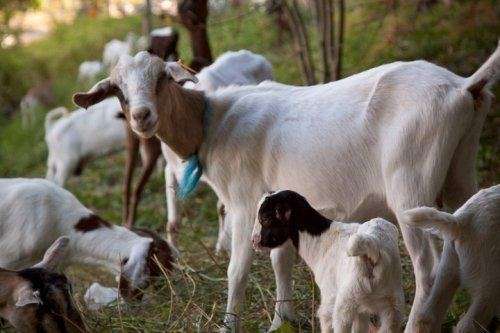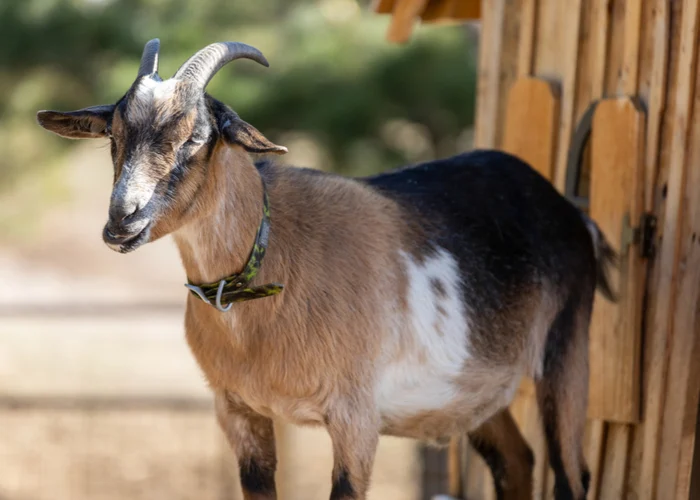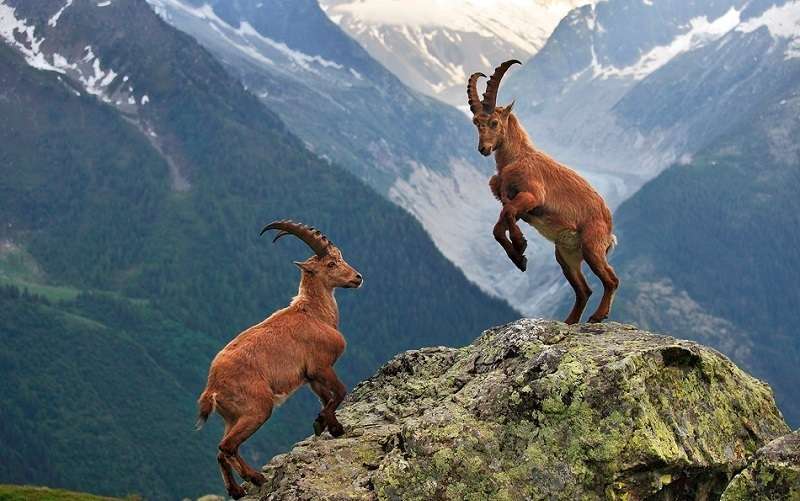
Description:
Somali goats are characterized by their long legs and neck, straight facial profile, short spiral horns, and normally carried high and curled tail. They also share a particular slender but well-muscled body type. Animals with polls are typical. Short and silky describe the coat. The Long-eared Somali has longer, horizontal or semi-pendulous ears, while the Short-eared Somali has shorter, forward-pointing ears. The body length and pin width of the Long-eared variant are both longer and wider, but their heart girths are similar. The Long-eared type’s males have short beards that hang down to their necks.
The majority have a dazzling white coat that occasionally has a reddish tint as well as brown or black spots or patches on the head, neck, and shoulders. Moreover, the ground color can be cream, brown, or black, either as a continuous hue or as a pattern of spots or patches.
Behavior:
Friendly and simple to handle. The tough Somali goats can be fed with any kind of plant material. Extreme aridity has produced creatures that are resilient, frugal, and drought-tolerant that can thrive and produce under adverse circumstances. They can withstand the scorching heat all year long thanks to their modest size and light color. Equatorial sun protection is provided by having black skin. They can cover great distances and reach the leaves of trees and bushes thanks to their agility and lengthy legs. Healthy teeth prevent dental issues and lengthen life.
Benefits/Uses:
Goats play a crucial role in the livelihood of pastoral families because of their numerous uses for milk, meat, and skins for trade or subsistence.
Origin/History:
The Somali goat is a breed of goat native to northeastern Kenya, Djibouti, and Somalia that is predominantly raised for its meat. Ethiopia, northeastern Kenya, and southern Djibouti are political borders that do not separate the traditional grazing grounds of Somali clans. 80 percent of Somalis have traditionally been pastoralists, either nomadic or seasonally semi-nomadic. In the past few years, there has been a resurgence in the popularity of e-commerce. Two large rivers in southern Somalia irrigate the lowlands, allowing certain crops to coexist with grassland in a mixed farming system.

Keeping as pet:
- Housing
In order to run a successful goat farming enterprise in Somalia, a good and pleasant home must be built. Therefore make an effort to build a nice, cozy home with all the amenities your animals need. The Somali goats want to live in dry, clean homes, just like many other domestic goat varieties do. Somali goat husbandry is thought to benefit from raised houses (which are above ground).
Make an effort to design the home such that you can clean it quickly. Build a reliable ventilation system, and make sure that the home receives a enough amount of light and fresh air. The Somali goats need a home area of about 12 square feet because they are a medium-sized breed of goat.
- Feeding
The most crucial aspect of Somali goat husbandry is providing the animals with high-quality, nourishing food. As a result, strive to always feed your goats very high-quality, nutrient-rich diets. Give them both grains and vegetables. Also, never give them tainted food.
Moreover, the goats from Somalia need additional vitamins and minerals. Therefore for better advice, check with a local veterinarian. And supply adequate clean, fresh drinking water to your goats as needed.
- Caring
The goats of Somalia are extremely durable and robust creatures that normally require less maintenance and care. They are great for meat production since they can withstand drought. A lactating doe can produce 1-3 kg of milk per day, and they are also excellent for milk production purposes. They are hence regarded as the milk queen of Kenya’s semi-arid and dry regions.
While giving these animals more attention will guarantee healthy growth and increased output. Vaccinate, deworm, and strive to constantly take good care of your goats.
Table





